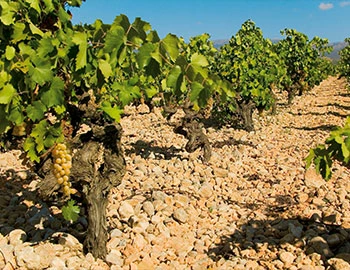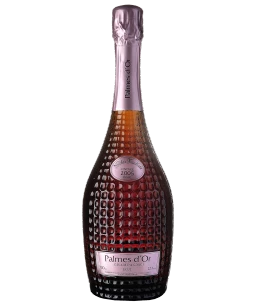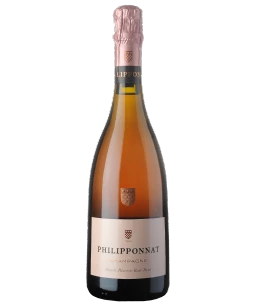Premier Vin Son Mayol 2017
VdT Vi de la Terra Mallorca, Bodega Son Mayol, 3000 ml
Description
It starts on the palate smoothly with a great intensity of taste. Youthful, fresh and muscular, it pampers the palate with palpable but very fine tannins. Ripe plums, blueberries and sweet cherries combine with liquorice and the fine scent of noble wood and of the finest tobacco. A great marriage of French elegance, masterful skill and Mediterranean charm!
Attributes
| Origin: | Spain / Mallorca |
| Grape variety: | Cabernet Sauvignon, Merlot |
| Label: | Vegan |
| Ripening potential: | 2 to 10 years after harvest |
| Drinking temperature: | 16 to 18 °C |
| Food Pairing: | Châteaubriand, Filet Wellington, Goulash, boeuf bourguignon, Calf's kidneys with mustard sauce, Saddle of lamb fillet with herb jus |
| Vinification: | fully destemmed, fermentation in wooden barrel, Pumping over, cooling period |
| Harvest: | hand-picking, strict selection, in small boxes |
| Maturation: | in partly new and used barriques/ Pièces |
| Bottling: | filtration |
| Maturation duration: | 12 months |
| Volume: | 14.5 % |
| Note: | Contains sulphites |
Son Mayol
This new bodega lies not far away from the lively city of Palma, and has set new standards on Majorca.
The ingeniously simple building fits harmoniously into the gently hilly landscape. In the distance, you can see the capital, and with a clear view, even the world-famous gothic cathedral, built from vibrant golden sandstone. The equipment has been selected according to the state of the art, and leaves nothing to be desired. The required power is acquired using solar cells, and all the water used is purified under strict monitoring before being fed back into circulation. This is all the more important, as for years now, Majorca has been suffering from a water shortage.
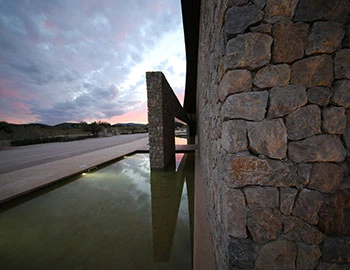
Cabernet Sauvignon
The backbone of Bordeaux
The Cabernet Sauvignon gives the Bordeaux its backbone, yielding deep violet wines with powerful tannins and endless ripening potential. It is the top dog in Médoc, and is placed in all five premier crus of Bordelais. When young, it often appears strict and unapproachable, but with advancing years, its tannins round off. It is wonderfully velvety, and yet always maintains its freshness. Typical flavours include cassis, graphite and cedar. Wherever Cabernet Sauvignon is found, Merlot is not far away. It complements the robust structure of Cabernet with softness, fruit and richness. The Cabernet Sauvignon is the most-exported vine in the world. It delivers persuasive qualities in Italy as an ingredient of the Super Tuscan, or as the flagship variety from California. There, it is lovingly titled “Cab Sauv”. Meat fans should be aware that it fantastically accompanies a grilled entrecôte. The family tree of Cabernet Sauvignon is surprising: its parents are Cabernet Franc and the white Sauvignon blanc.
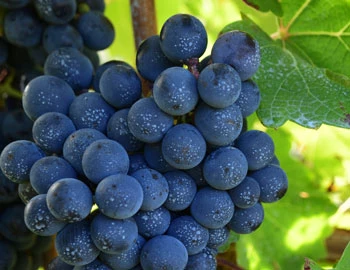
Merlot
Everybody’s darling
Merlot is the most charming member of the Bordeaux family. It shines with rich colour, fragrant fullness, velvety tannins and sweet, plummy fruit. It even makes itself easy for the vintner, as it matures without issue in cool years as well. This is in contrast to the stricter Cabernet Sauvignon, which it complements as a blending partner. Its good qualities have made the Merlot famous worldwide. At over 100,000 hectares, it is the most-planted grape in France. It also covers large areas in California, Italy, Australia and recently in Eastern Europe. The only catch is that pure Merlot varieties rarely turn out well. Its charm is often associated with a lack of substance. Only the best specimens improve with maturity. They then develop complex notes of leather and truffles. This succeeds in the top wines from the Bordeaux appellation of Pomerol and those from Ticino, among others.
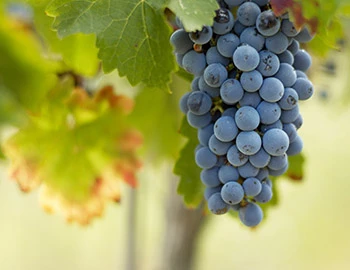
Mallorca
Mallorca: new premium wines from old varieties
The party island is showing an entirely different, more delightful side: every year, more premium wines are produced in Mallorca. While international varieties like Chardonnay, Cabernet Sauvignon and Merlot yield excellent wines in Mallorca’s terroir, top winemakers increasingly use the best native varieties, such as Manto Negro, Callet and Prensal Blanc. The results are independent wines with Mediterranean charm and surprising freshness.
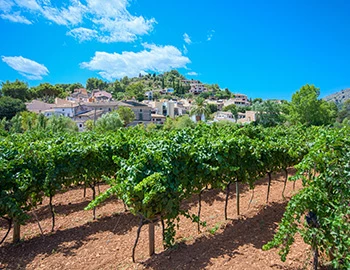
Spain
Spain – Variety and perfection
“Somewhere in la Mancha, in a place whose name I do not care to remember...,” begins Don Quixote's odyssey.
The most famous part is definitely when Don Quixote thinks windmills are his enemy and wants to fight them – until they nearly kill him. It’s possible there was a bit too much of the La Mancha wine at play. Spanish vines fight for their survival in rugged landscapes, battling fierce drought and rough soils. But they fight well.
